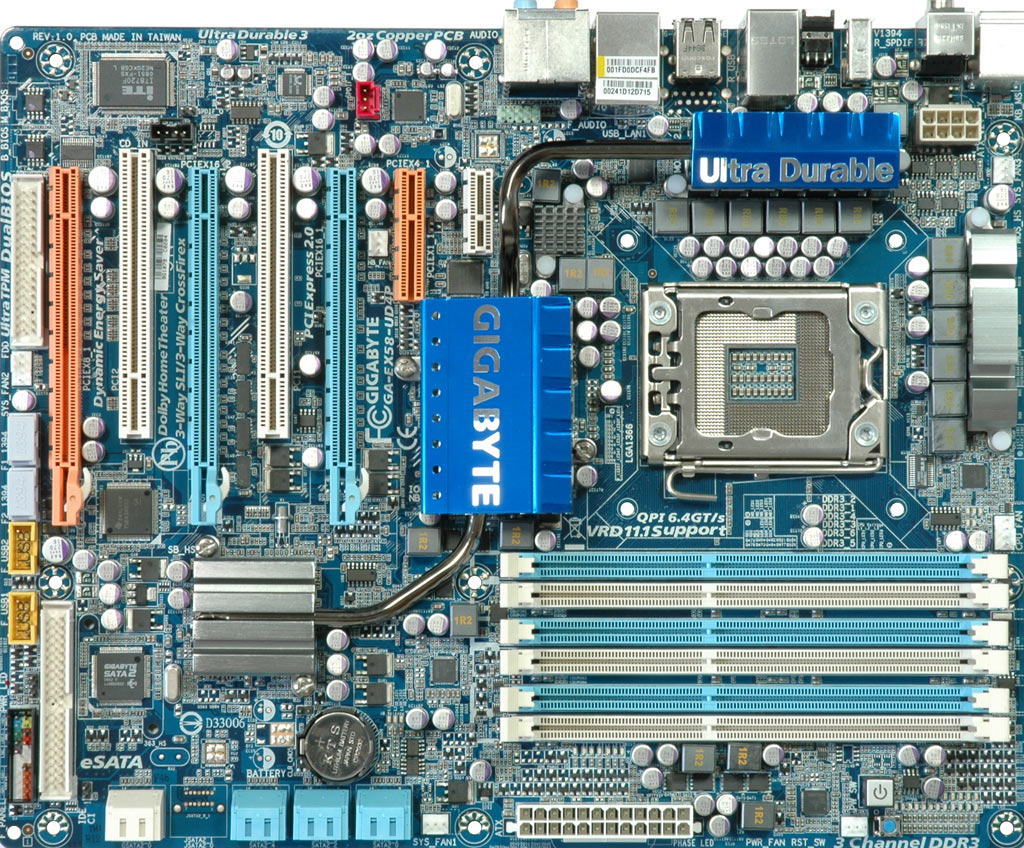Core i7 Memory Scaling: From DDR3-800 to DDR3-1600
Core i7, Platform, And Memory Details
CPU: Intel Core i7-975
Since the memory performance differences are smaller on slower processors, we decided to use the fastest Core i7 processor available: the new 3.33 GHz Core i7-975 Extreme Edition. It succeeds the 3.2 GHz Core i7-965, inheriting all technical characteristics, such as the 45 nm Nehalem core, 6.4 GT/s Quick Path Interconnect (QPI), 8 MB L3 cache, 256 KB L2 cache for each of the four cores and Hyper Threading. It also includes Turbo mode, which automatically overclocks the Extreme Edition Core i7 processor by one clock speed increment if possible within the 130 W thermal envelope (and two bins if only one core is active).
Besides the 133 MHz clock speed increase—which is rather insignificant—the main difference is the upgraded stepping. The Core i7-975 is a D0 model, while the i7-965 CPUs were manufactured using C0 silicon. We locked the Core i7 CPU clock speed to 3.46 GHz manually to avoid performance variances due to Turbo mode; 3.46 GHz equals the 3.33 GHz base speed plus the 133 MHz increment that Turbo would add when activated.
Platform: Gigabyte GA-EX58-UD4P
Since we are using several MSI motherboards on overclocking projects, and an Asus platform for our upcoming 2009 CPU charts, we looked around for a different platform vendor this time. The board we chose is a Gigabyte GA-EX58-UD4P, which is based on the X58 Express chipset. It is an upper mainstream version of the EX58 Extreme, which we reviewed here. The layout and base hardware, however, is the same on the Extreme, the UD5 and the UD4P—they share the same 12+2+2 phase voltage regulator, PCI Express configuration and so forth. They differ in features like the heat pipe construction, secondary Gigabit controller, and additional storage connectivity.
Gigabyte has done well in refining motherboard platforms by being quick to provide power saving features. Differences can typically be found only if you’re into heavy overclocking, but the overall hardware basis from Gigabyte appears more solid than ever these days. Finally, it’s good to know that the cheaper EX58-UD4P is almost identical, technically, to the enthusiast X58 Extreme.
Memory: Corsair Dominator TR3X6G1600C8D (3 x 2 GB)
Get Tom's Hardware's best news and in-depth reviews, straight to your inbox.
Corsair is one of the top brands for enthusiast memory; we’ve been using DDR3-1600 Dominator memory as our reference RAM for many reviews in Tom’s Hardware labs worldwide. The intention of this review is to try many different memory speeds and both fast and slow timings, hence the TR3X6G1600C8D seemed to be a good choice. It can be overclocked to more than DDR3-1600 speeds, but can also be operated at a conservative DDR3-800 clock. Our timings covered CL6-6-6-18 up to CL11-11-11-30.
Current page: Core i7, Platform, And Memory Details
Prev Page Which RAM Speed Is Best For Core i7? Next Page RAM Speeds And Timings In Detail

